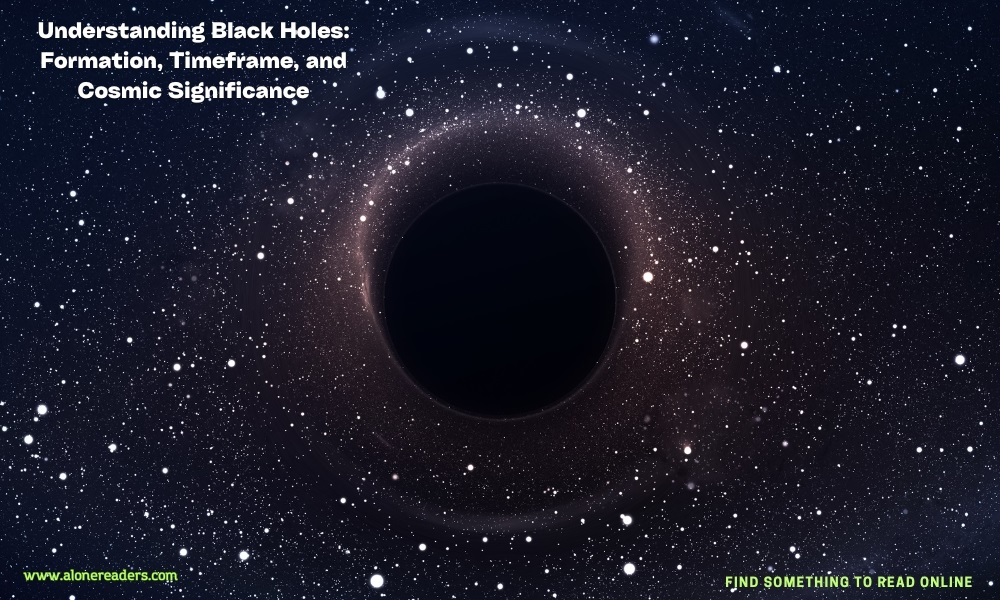
Black holes, those mysterious and invisible entities in space, have captured human imagination and scientific interest for decades. These cosmic phenomena are regions in space where the gravitational pull is so strong that nothing, not even light, can escape from them. Their study is crucial for understanding the most extreme conditions of matter, space, and time.
The concept of a black hole originates from Einstein's theory of general relativity, which predicts that a sufficient compact mass can deform spacetime to form a black hole. The boundary of the region from which no escape is possible is called the event horizon. Within this boundary, the gravitational pull is so intense that it inevitably leads to what is known as a singularity, a point where the curvature of spacetime becomes infinite.
The process of black hole creation typically begins with a star significantly larger than our Sun. The life cycle of such a star involves several stages, primarily fueled by nuclear fusion, where it converts hydrogen into helium, and, through a series of processes, heavier elements are formed in the core. As the nuclear fuel diminishes, the star undergoes drastic changes, leading to its ultimate fate as a black hole.
For a black hole to form, the original star must be massive enough—usually at least about 20 times the mass of the Sun. In their final stages, these stars experience a supernova explosion, an event marked by an incredible burst of light and the outward ejection of the star's outer layers. What remains after this explosion is a dense core. If the core's mass is above a certain threshold, it will collapse under its own gravitational pull to form a black hole.
The time it takes for a black hole to form can vary depending on the mass and remaining life of the star. For most stars, the journey from the beginning of collapse to the formation of a black hole can occur incredibly quickly, in astronomical terms. After the supernova explosion, the core collapse that leads to a black hole might happen in a matter of seconds. However, the journey of the star to reach the supernova stage takes millions to billions of years, depending on its initial mass and composition.
While most known black holes are formed from the remnants of massive stars, there are other types as well. Supermassive black holes, which reside at the center of most galaxies, including our Milky Way, pose a greater mystery. These colossal black holes, millions to billions of times the mass of the Sun, are believed to form from the direct collapse of enormous gas clouds under specific conditions in the early universe, or grow from smaller black holes that merge and accrete matter over time.
Another interesting category is intermediate black holes, whose formation mechanism is still not completely understood. These might form through the merger of stars in dense star clusters, or as a result of the merging of smaller black holes.
The study of black holes is not just about understanding their formation but also about appreciating their influence on the surrounding universe. They play a crucial role in the evolution of galaxies and can affect the formation of stars and other celestial bodies. When two black holes orbit each other and eventually merge, they can produce powerful gravitational waves, ripples in spacetime that can be detected by instruments like LIGO (Laser Interferometer Gravitational-Wave Observatory). Such observations provide new insights into properties of black holes and the nature of gravity.
Interestingly, despite their reputation as cosmic vacuum cleaners, black holes do not actively 'suck' matter from their surroundings. Objects fall into them in the same way that any celestial body might be attracted to another under the influence of gravity. Thus, an Earth-sized planet placed at a safe distance from a black hole would remain in orbit and not be pulled in.
The fascination with black holes continues to drive astronomical research and inspires questions about the very nature of the universe. From the detection of gravitational waves to the imaging of a black hole's event horizon, our understanding of these extraordinary entities continues to evolve. Their study not only helps astronomers to comprehend the life cycles of stars and the dynamics of galaxies but also challenges our fundamental notions of space and time.
In conclusion, black holes are not just fascinating celestial objects; they are key to understanding the larger cosmic puzzles of our universe. The process of their creation and the time it takes for them to form depend greatly on their size and the conditions around them. As our tools and techniques improve, we may soon unlock more secrets that these cosmic giants hold, deepening not only our knowledge of the cosmos but also of the laws of physics themselves.